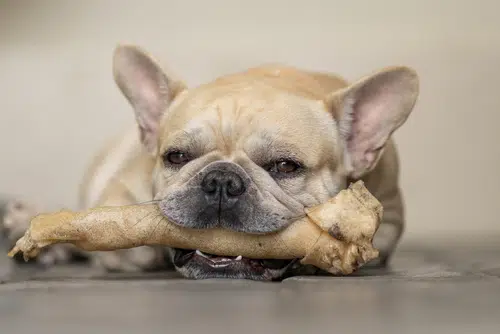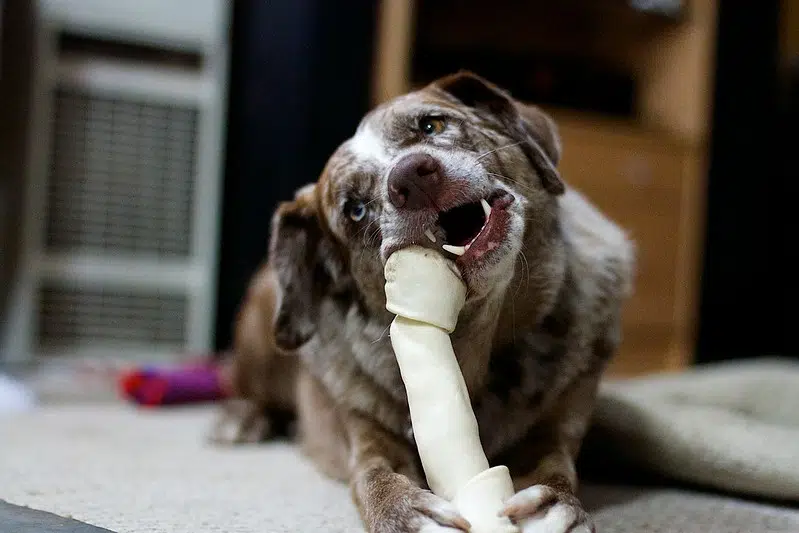Home » Blog » Pet » Pet Health & Safety » Is Rawhide Bad for Dogs? We Explore
Categories
Tags
animal welfare
breed profile
buying a car
buying a pet
Car
car accessories
car care
car features
car insurance
Car safety
car sales
car service
cat
cat behaviour
cat body language
Cat Breeds
cat food
cat insurance
comprehensive car insurance
Dog
Dog Behaviour
dog body language
Dog Breeds
dog food
Dog Insurance
dog training
eco friendly cars
Kitten
New Car
pet accessories
pet activities
Pet Adoption
pet breeders
pet days of the year
pet fun stuff
Pet Health
pet insurance
pet parenting
Pet Safety
pet services
Puppy
rescue pets
road safety
road trip
safe driving
Recent Blog:
Facebook Posts
2 days ago
Growing old sometimes means we can’t take care of pets anymore. Find out some advice on what to do when this happens:![]()
![]() Senior Pet Parents – Contingency Plans for Your Pet – bit.ly/44bzwkS
... See MoreSee Less
Senior Pet Parents – Contingency Plans for Your Pet – bit.ly/44bzwkS
... See MoreSee Less
Senior Pet Parents' Contingency Plans for Pets
www.pd.com.au
Sometimes senior pet parents need more downtime. For older pet owners, this can be tricky to navigate if their dog or cat is full of beans and wants to4 days ago
Before you rev up the engine, let’s run through a checklist of things to do before starting your car. Not only do these steps ensure your safety (and that of others around you), but they also help in maintaining your vehicle's longevity.![]()
![]() Driving Tips: Your Checklist Before Starting Your Car -
... See MoreSee Less
Driving Tips: Your Checklist Before Starting Your Car -
... See MoreSee Less
Driving Tips: Your Checklist Before Starting Your Car
www.pd.com.au
Heading out for a drive? Hold up a second! Whether you're dashing off to work, running errands, or embarking on a road trip adventure, there are a few1 week ago
Are intestinal worms setting up camp in your dog’s gut without paying rent? Here’s how to spot the main culprits and get rid of them too:![]()
![]() Preventing, Identifying and Treating Intestinal Worms in Dogs - bit.ly/43YjCKu
... See MoreSee Less
Preventing, Identifying and Treating Intestinal Worms in Dogs - bit.ly/43YjCKu
... See MoreSee Less
Preventing, Identifying and Treating Intestinal Worms in Dogs
www.pd.com.au
Intestinal worms, such as roundworms in dogs are one of the least glamorous topics on the planet. These intestinal parasites that basically use our dogsIs rawhide bad for dogs? It’s an important question which is causing lots of discerning pet parents to seek alternative chews. The online discussion is causing consternation among pet parents, vets, and animal experts alike.
Many have removed it from their dog’s diet entirely, while some choose to keep it in but under close supervision.
Until recently rawhide had seemingly stood the test of time as one of the most popular ‘natural’ and long-lasting dog chew treats. Let’s look at the pros and cons before signing off on a conclusion.
And before we do that, let’s answer this quick question.
What is rawhide?
As the name suggests, rawhide is made of natural raw animal hide. It’’s most often the hide of cows or horses but is also made from other animals like sheep and pigs.
The inside layer of the hide is dried and ground or cut before being pressed into the shape of dog chew toys. Some rawhide dog chew toys have additives like salt and bleach to make them longer lasting or add flavour.
Check out how rawhide is made:
Benefits of rawhide for dogs
Every pup parent knows that a teething puppy is no joke (read what to do about puppy teething). A chew toy can make a big difference to our puppy’s sense of wellbeing. Not to mention save our shoes. We also know once puppy grows up, that powerful urge to chew may calm down but it doesn’t stop.
Puppies and adult dogs chew to keep their teeth and gums healthy and strong. Chewing actively helps to prevent the build-up of plaque and tartar, which is why it’s imperative that we supply something for our dogs to chew on.
Rawhide was designed to be chewy, tasty and long-lasting. However, despite these benefits, safety may not have been part of the design process. Here’s why…
Rawhide dangers for dogs
Rawhide is extremely durable. Over time (and after much chewing), it breaks into smaller pieces that are soft and can be digested. However, this isn’t a given. The size of the pieces and how digestible they are vary depending on a dog’s chewing style.
A teething puppy or adult dog who’s in their prime are likely to chew more intensively than an older dog. And throughout a dog’s life, its chewing style will adjust according to its teeth, its size and its energy levels.
Perhaps you can guess what the dangers are…
- Choking hazard
Strong chewers can break off larger chunks of rawhide, which can quickly become a choking hazard. In some cases, this can be fatal. In non-fatal situations, there is still a fair amount of trauma for both pup and pet parent.
- Digestive blockage
If a dog manages to swallow a large chunk of rawhide, they run the real risk of it getting trapped in the oesophagus or the digestive tract. This may need to be surgically removed by a vet, often in an emergency surgery. The blockage can result in death if left unchecked.
- Digestive problems
The chemicals and artificial flavourings added to rawhide chews during manufacture often cause allergy and irritation. Some dogs are also allergic to the rawhide itself or bacteria in the product. Symptoms may include rashes, gastrointestinal irritation, bloating, and diarrhea.
Besides the dangers of rawhide, look out for these common household items that can be bad for pets.

Reduce rawhide risk
You can mitigate some of the risk by selecting an appropriately sized chew (read about the Dog Chew Awards for more in this regard). A large dog, for instance, mustn’t be given a tiny rawhide chew as this increases the risk of choking.
The onus, however, lies with the pet mum or dad to make a responsible decision. If you’re there to supervise your dog’s rawhide chewing and he or she suffers no side effects from their chew, it’s possibly ok from time to time.
However, if your pup is a heavy chewer, has a sensitive tummy or skin, or will be left unsupervised with his rawhide, it’s probably best to opt for a safer chew toy.
Rawhide alternatives
There are many safe alternatives to rawhide that will give your dog the same level (if not more) chew satisfaction.
Here are some options:
- Beef tendons. Rich in protein and collagen
- Kangaroo tendons. All natural and good for teeth and gums
- Fish skins. Packed with Omega 3 (best for small dogs)
- Deer antlers. Full of calcium and phosphorous
The great thing about these chews is that they provide both chewing stimulation and nutritional benefits. And they’re made and sold in Australia, which means fewer food miles in addition to fewer food dangers. Want to reduce your carbon pawprint further? Read about eco friendly dog food.
Remember, it’s always a good idea to supervise your pup when they have a chew toy of any kind.
Pet insurance offers an extra layer of protection
Regardless of which chew you choose, you may want to consider pet insurance. Then if your pooch has an accident – rawhide related or not – you can visit the vet without worrying about your pocket.
Share On:




